* ESC - close the search window
Chytomo Spotlights
Through silence to conversation: key moments of VI Literary Festival Тranslatorium
02.11.2023
Literary and translation festival Translatorium is an annual event hosted in Khmelnytskyi that brings together translators, writers and the local community. Hosting and managing a festival in wartime presents a real challenge, which led to the cancellation of Translatorium in 2022. This year, amidst air raid alerts, the festival was held for the sixth time and became a notable event for Khmelnytskyi. Over two engaging days, about 20 participants gathered for 14 events across different venues in the city.
The theme of this year’s Translatorium, “Through Silence to Conversation,” emerged in response to the onset of Russia’s full-scale invasion, influencing many people, including the festival organizers. The director of the festival Tania Rodionova explained that during this time, both she and her team had reevaluated the meaning of their work and this year’s Translatorium is an attempt to learn to speak again after a period of silence.
“I would like this year’s events to give us the opportunity to speak out, to reflect on what to do with our experience, and if it can be interpreted at all, and above all, to be able to hear each other. Over the past two years, we have seen that culture is the tool that helps us to remain resilient, to continue thinking and comprehending everything that happens to us,” Rodionova said in her speech.

Festivals are always about networking and interchange. The program of this year’s Translatorium was crafted to look at translation as a broader phenomenon, a kind of metaphor. How to translate the language of war and difficult, traumatic experiences for foreigners? How to interpret silence into words in art and to finally start a dialogue? These were the questions that continuously arose during the two days of the festival.
RELATED: Bridges over time
Interpreting Ukraine abroad
Since the onset of Russia’s full-scale invasion in 2022, interest in Ukrainian literature has increased dramatically in Europe, Britain and the United States. However, book analyst Inna Bilonozhko notes that initially this interest wasn’t centered on certain authors and topics abroad, but about translations themselves as a manifestation of support for Ukraine.
In particular, Bilonozhko spoke about “Maya and Her Friends” (“Maya and Her Mothers” in the original Ukrainian version), a book by Larysa Denysenko and Masha Foya, translated into English and published by the British publishing house Bonnier Books. Since the onset of the full-scale invasion, the publishing house has been donating all profits from the sale of this book to support Ukrainians. Waterstones, the largest chain of bookstores in Britain, held a charity event and created a list of books, one hundred percent of the sales of which were donated for supporting Ukraine.

However, despite last year’s great interest in Ukrainian literature, European publishing houses and bookstores faced a shortage of translations by Ukrainian authors. Therefore, in the first months of the full-scale invasion, translations of books that had been published earlier were the most popular.
Among the notable successes of Ukrainian books translated and sold abroad over the past year, Bilonozhko highlighted “A Ukrainian Christmas” by Nadiyka Gerbish and Yaroslav Hrytsak. It was chosen as the book of the month before last year’s Christmas in Britain. Many Ukrainian refugees bought it as a gift for the British families who had temporarily hosted them. The success of these international sales can be attributed to the significant presence of Ukrainian authors in the information space of many foreign media outlets.
At the same time, Bilonozhko recalled the example of Andriy (Andrei) Kurkov, who participated in the BBC morning show almost every day during March and April of 2022. His media visibility significantly influenced sales of the translation of his book “Diary of An Invasion” in the UK. According to an annual international Booker Prize survey, Kurkov was ranked 20th in the ranking of foreign literature sales for the past year. He is the first Ukrainian to be ranked among the top translated authors in the UK.

The translations of books by other writers, such as Artem Chekh, Oleksandr Mykhed and Artem Chapeye, are popular in the West thanks to their personal columns in prestigious European, American and British editions. The constant presence of their writing in the media also greatly increases their chances of successful deals with foreign publishers.
There is a demand for translations of Ukrainian poetry in the United States. Works such as “The Voices of Babyn Yar” by Marianna Kiyanovska and poetry books by Halyna Kruk and Kateryna Kalytko sell well there. However, as per Inna’s analytics, poetry books are generally difficult to sell. According to a survey by the University of Rochester, the total percentage of translated literature in the United States is only 3%, and poetry translations account for 0.7%.
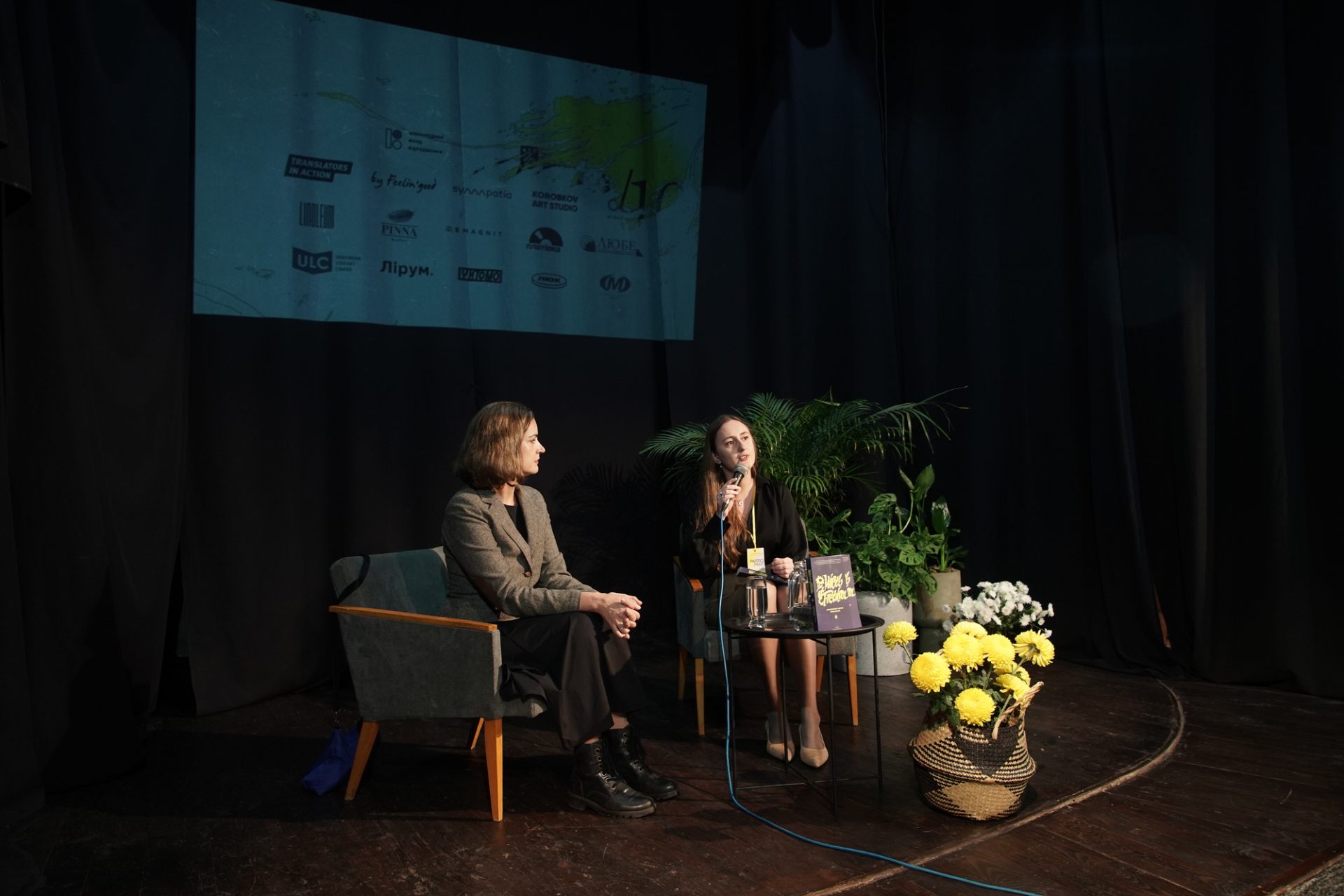
Despite the fact that poetry books remain the most difficult segment abroad from a marketing point of view, in Ukraine it is the poetry that responds and records the war faster than anything else. This was evident during the recent festival, where the poetry and prose anthology “Voices of Freedom: Contemporary Writing From Ukraine” prompted discussion on this topic with book’s co-compiler Kateryna Kazimirova and poet Lyuba (Lyubov) Yakimchuk.
RELATED: Steppe people in the mountains: how the New York Camp took place
The book was published in the United States almost immediately after the start of the Russia’s full-scale invasion. The anthology features 27 authors who wrote in the course of the last 50 years, starting from works by Ihor Kalynets to contemporary war poetry. It also includes novellas, short stories and essays arranged in chronological order and combined by genre and thematically. The texts for this anthology were prepared by 30 translators, comprising both renowned and emerging talents. British journalist and writer Peter Pomarantsev contributed the foreword, setting the stage for the book’s overarching themes of freedom and the relentless struggle for it.
“We tried to show that our struggle has been going on for a very long time. It began not on Feb. 24, not even in 2014, but much earlier. And the artistic texts are the proof. In addition to freedom, there are universal topics: first love and teenage stories, loss of home and the tragedy of Babyn Yar (site of massacres in Kyiv carried out by Nazi forces in World War II). We deliberately did not set out to create a book of war literature, because we realized that there would be many more,” Kazimirova said during the presentation.
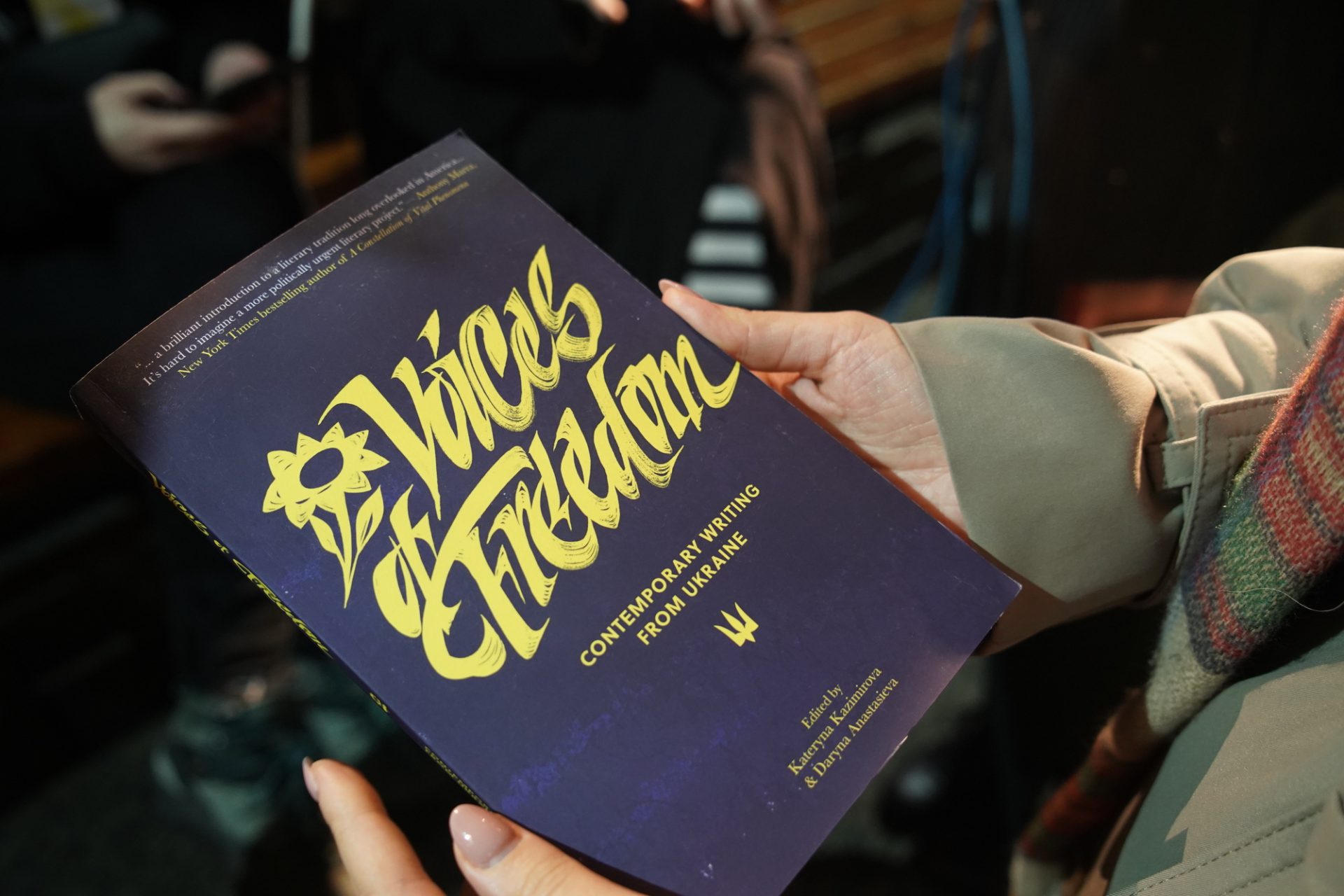
The compilers of the anthology have already held about 18 presentations for various audiences in the United States: university lectures, high schools, cultural and diaspora centers and bookstores. Last year in Ukraine, some of the authors of the anthology made a short film “Voices of freedom: contemporary writing from Ukraine,” with readings both in Ukrainian and English.
Translator Yaroslava Strikha and literary critic Bohdana Romantsova presented two books from the Warning Books series by ist publishing: “Terror from the Air” by Peter Sloterdijk and “Air War and Literature” by W. G. Zebald. The publishing house created this series in 2022 to talk about the relationship between culture and war. The ist publishing team is convinced that gaining new insights into these connections can pave the way for fresh opportunities for informed action, cultivating new relationships, and robust discussions about what has already been said and written.
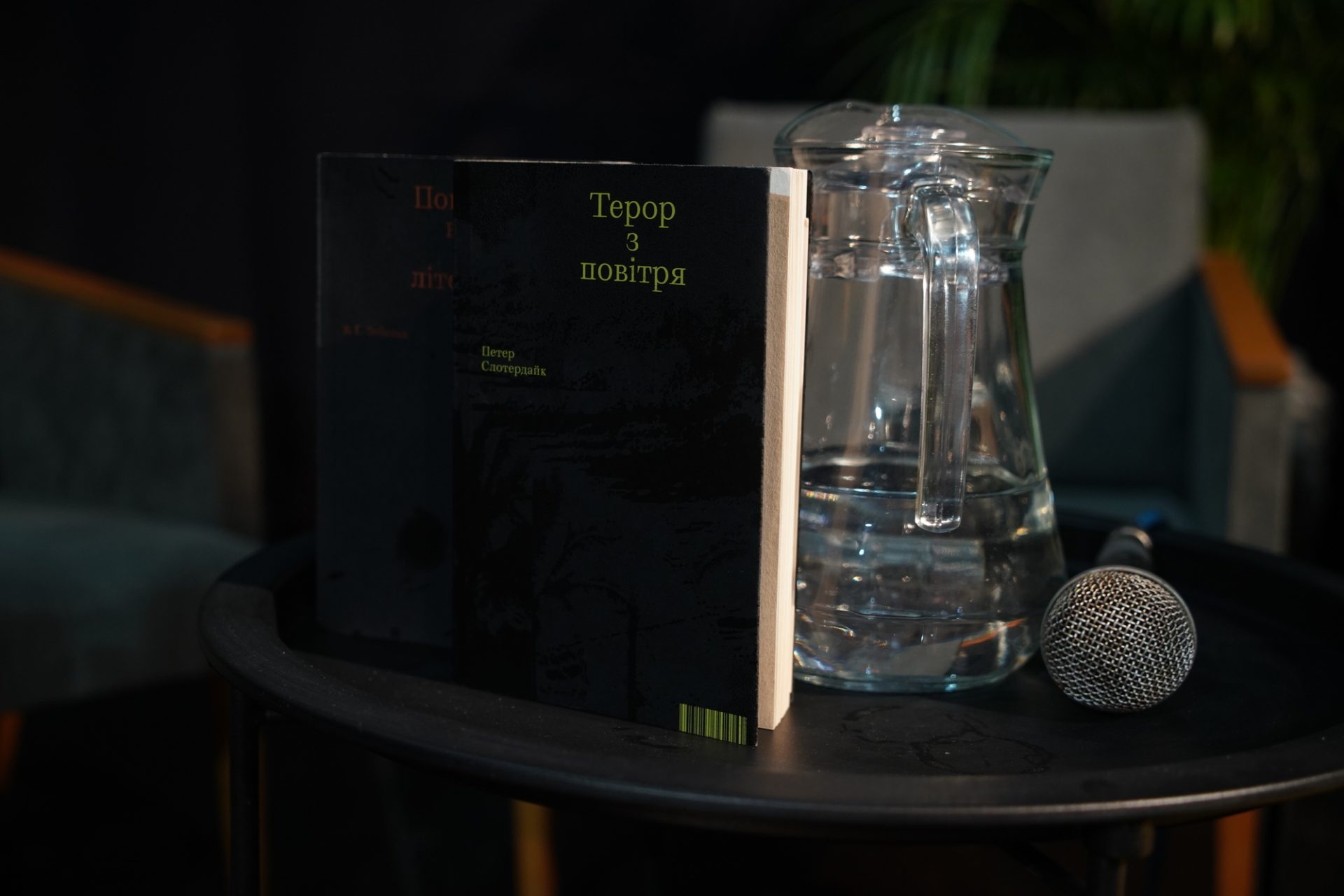
Interpreting the language of war
The role of a fixer emerged as one of the significant areas of work for many translators in Ukraine during the war. This profession began to take shape during the Revolution of Dignity and the beginning of the war in the East of Ukraine in 2014. However, the full-scale Russia’s invasion spurred the development of the fixer’s role in Ukraine. Initially, anyone who knew English and had a network of local contacts, — from school teachers, journalists and students to drivers, became fixers. But most often, it was translators who were retrained as fixers.
The discussion between Hanna Kyriyenko and Daryna Anastasieva was devoted to comprehending this emerging sphere of translation. A fixer is a person who organizes and conceptualizes materials for foreign media, and is, at the same time, a psychologist and a local producer. Translator and fixer Hanna Kyriyenko spoke about her experience working mainly with French television. She often had to translate local Ukrainian culture for foreign journalists because they lacked understanding of the Ukrainian context.
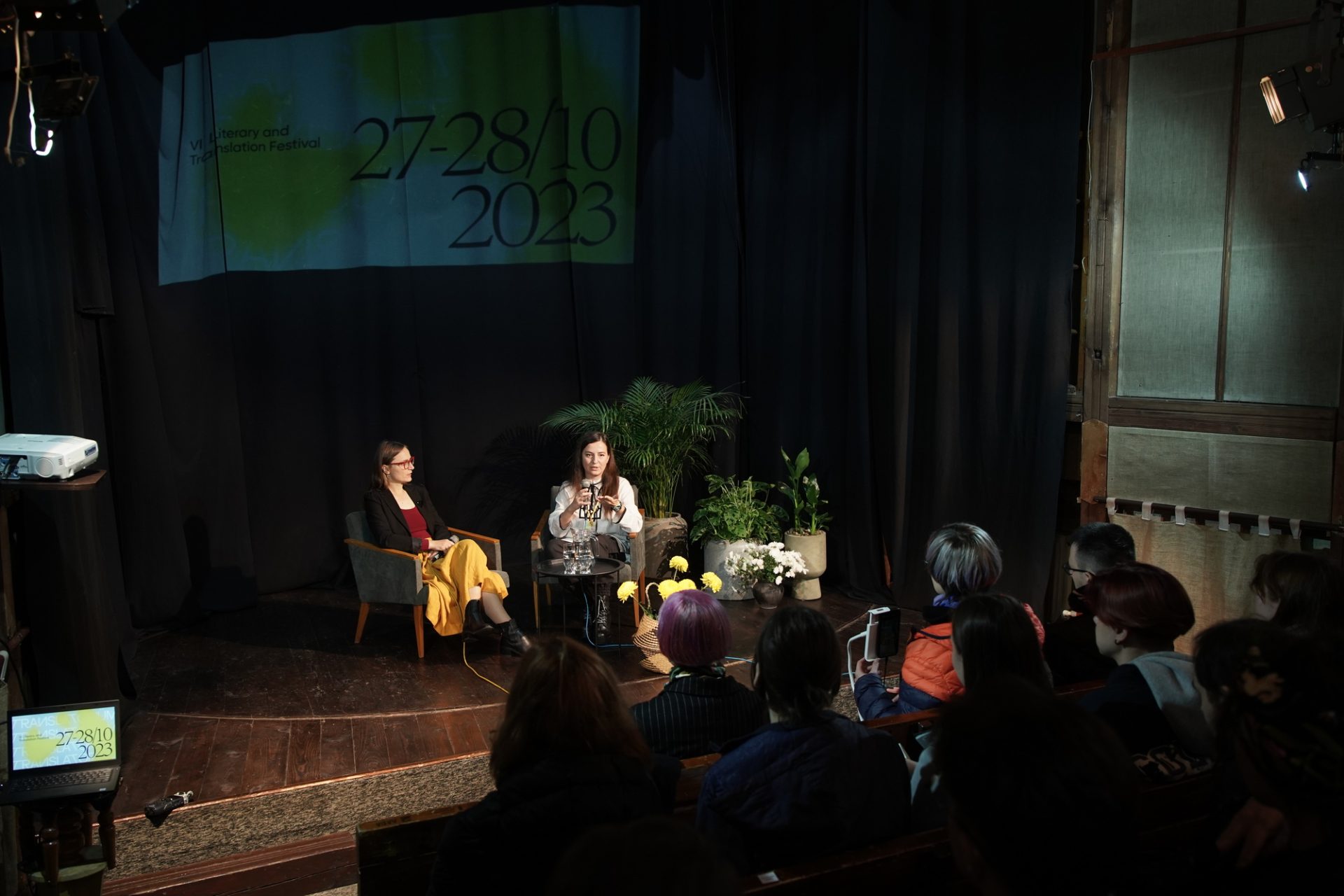
In the second year of the full scale invasion, the profession of fixers became specialized: separate chats and groups on social media, regional associations and channels of interaction were formed. However, according to Daryna Anastasieva, this field still lacks a legal framework including the right of being protected in a war zone. Now the community of fixers is trying to create a public organization to gradually receive state support for the sector.
RELATED: 30th anniversary BookForum in Lviv: Reflecting on wartime language and literature
During almost two years of full-scale invasion, the attitude of Ukrainians towards fixers and foreign journalists has evolved. People are more open to share their stories and sometimes even offer them themselves. According to Hanna Kyriyenko, the work of a journalist in wartime is greatly influenced by interaction with the individuals at the center of their stories, requiring empathy that transcends established normas. In particular, Hanna shared her experience of working with complex topics, where the fixer should also play the role of a psychologist and a compassionate listener.
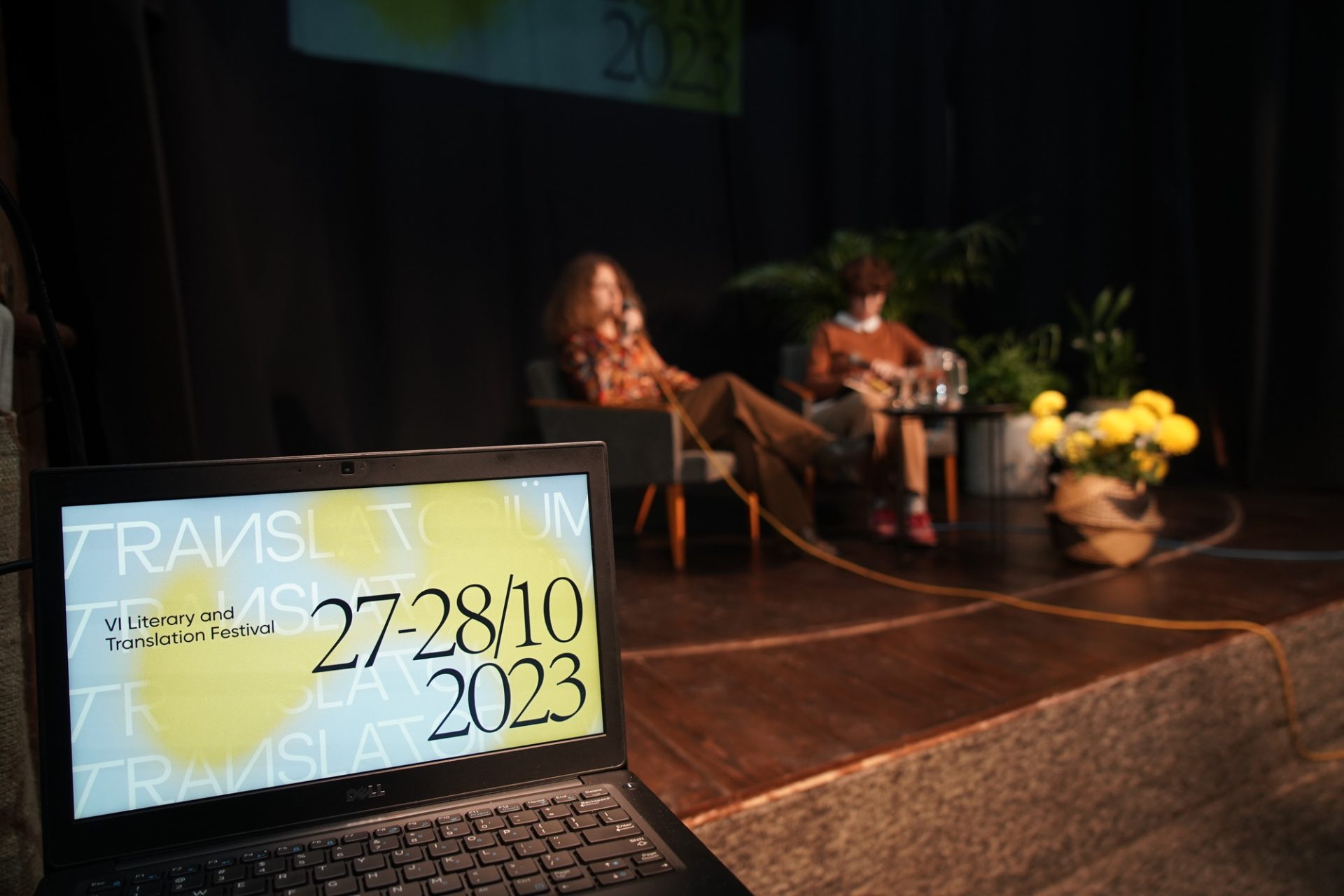
Other topics of reflection during the conversation between journalist Yevhenia Nesterovych and writer and translator Haska Shyyan included the evolution of language and the (in)ability to interpret grief and suffering for foreign audiences. Haska Shyyan is convinced that texts about the war should be very different for foreign and Ukrainian audiences, as she thinks most of what is written for Ukrainians is untranslatable for international readers. Shyyan named “An airy and disturbing book” by a journalist, radio and TV presenter, translator and literary critic Iryna Slavinska as an example of books that can bring foreign readers closer to the experience of Ukrainians. In her opinion, this text is imbued with everyday sensuality of life during the war, a quality which can foster empathy toward Ukrainians.
“Most of the books that will be published now will deal directly with this war. But in fact, I would not really like the portrait of Ukraine to consist only of this. Most people in Western Europe believe that Ukrainian literature began in the 1990s. They only know Zabuzhko, Andrukhovych and other renowned names. Therefore, it is strategically important to fill in these gaps,” Shyyan reflected.
Interpreting beyond words
Difficult experiences and conditions during the war are very hard to talk about using words alone, which is why we turn to other intermediaries. Cultural events have also evolved into a kind of collective therapy in the almost two years since the invasion began.
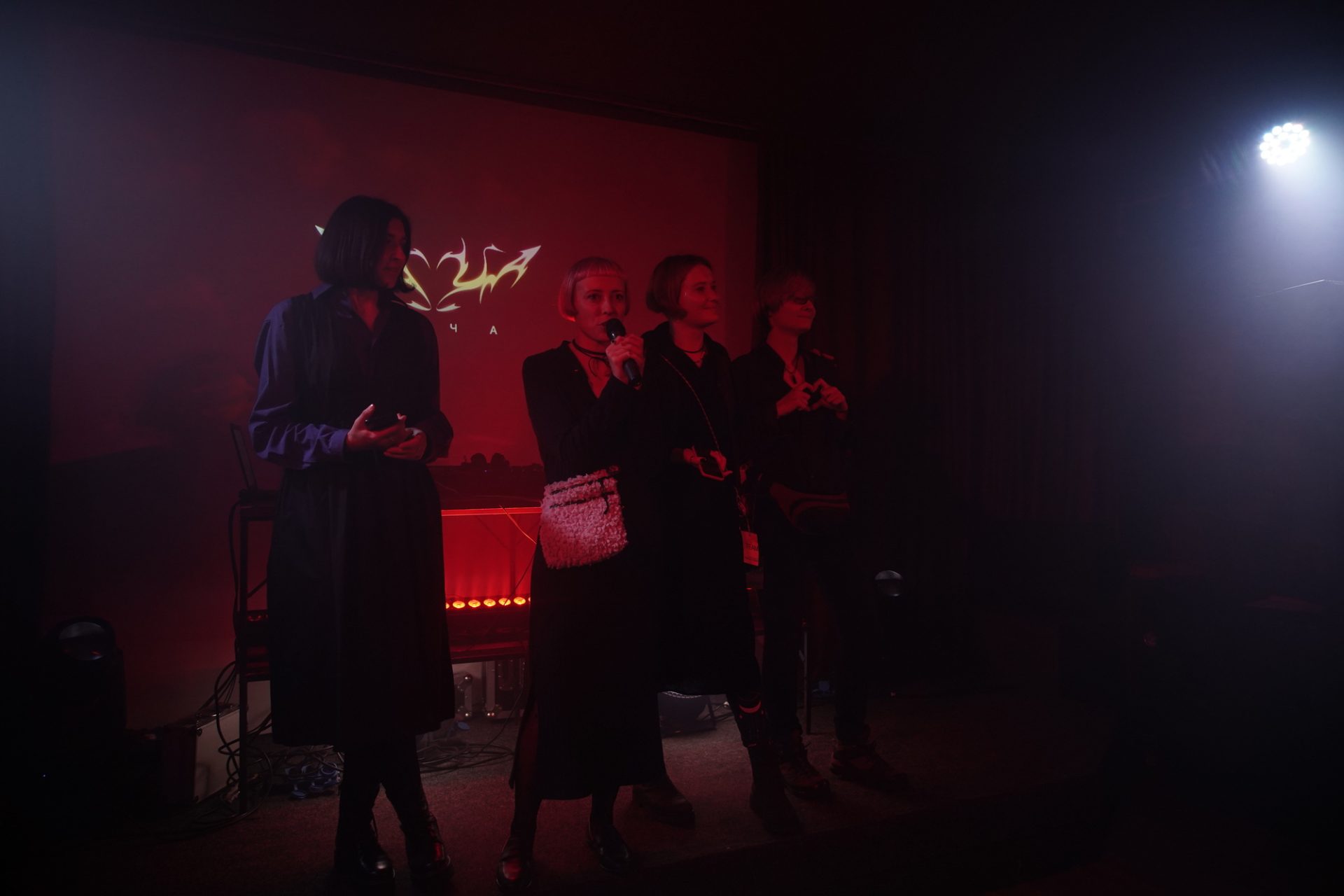
Specific to this year’s festival, its director Tania Rodionova, together with dancers from Khmelnytskyi, created a choreographic performance based on “The Dictionary of War” by poet Ostap Slyvynsky. The music was composed by Yana Shpachynska, the lead singer of Zapaska Modern Ukrainian Indie Band. For the team, this performance became a way to talk about the history of war through movement and dance. One of the participants, dancer Aziza Kilim, shared how she chose the text that resonated with her most of all:
“The piece I have chosen is called “Joy.” After reading it, I realized that this is exactly how I live through this war. We gathered together several times and improvised the same excerpt from the book for all the dancers, changing the text and music later. We tried to see if we could take more emotional and difficult fragments. I experienced dancing in this format for the first time in my life. Before that, music always served as a guide. The biggest difficulty for me was to convey my emotions and put what I was experiencing from reading into motion,” Kilim commented.
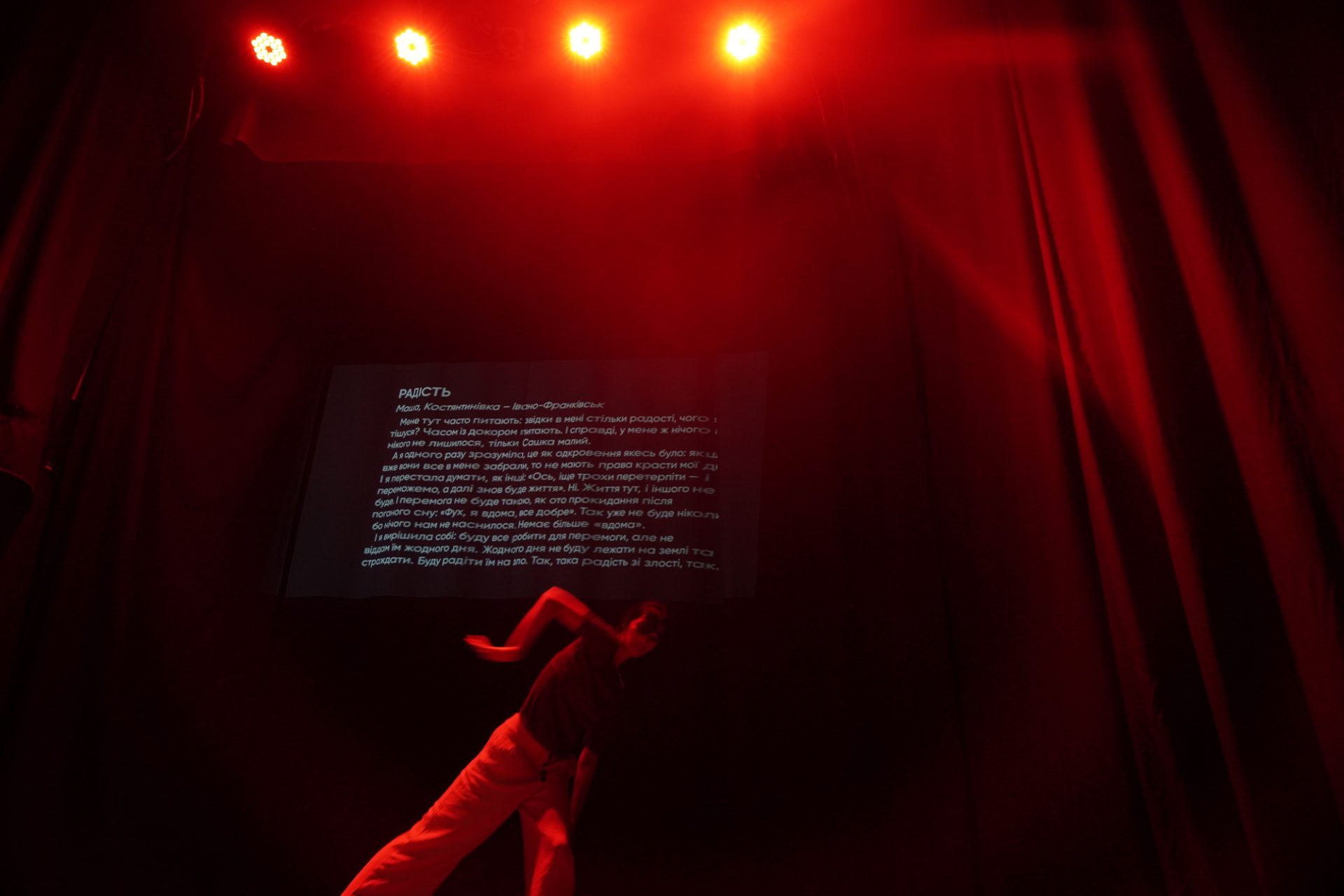
The organizers of the festival invited attendees to explore their emotions about the new military reality through various mediums, including visual media at the opening of “Glass House”, the exhibition by poets Lesyk Panasiuk and Daryna Hladun, and the screening of a selection of animated documentaries by the Linoleum festival. At an art therapy session led by artist Maria (Mari) Kinovych, visitors tried to express their emotions with the help of paint.
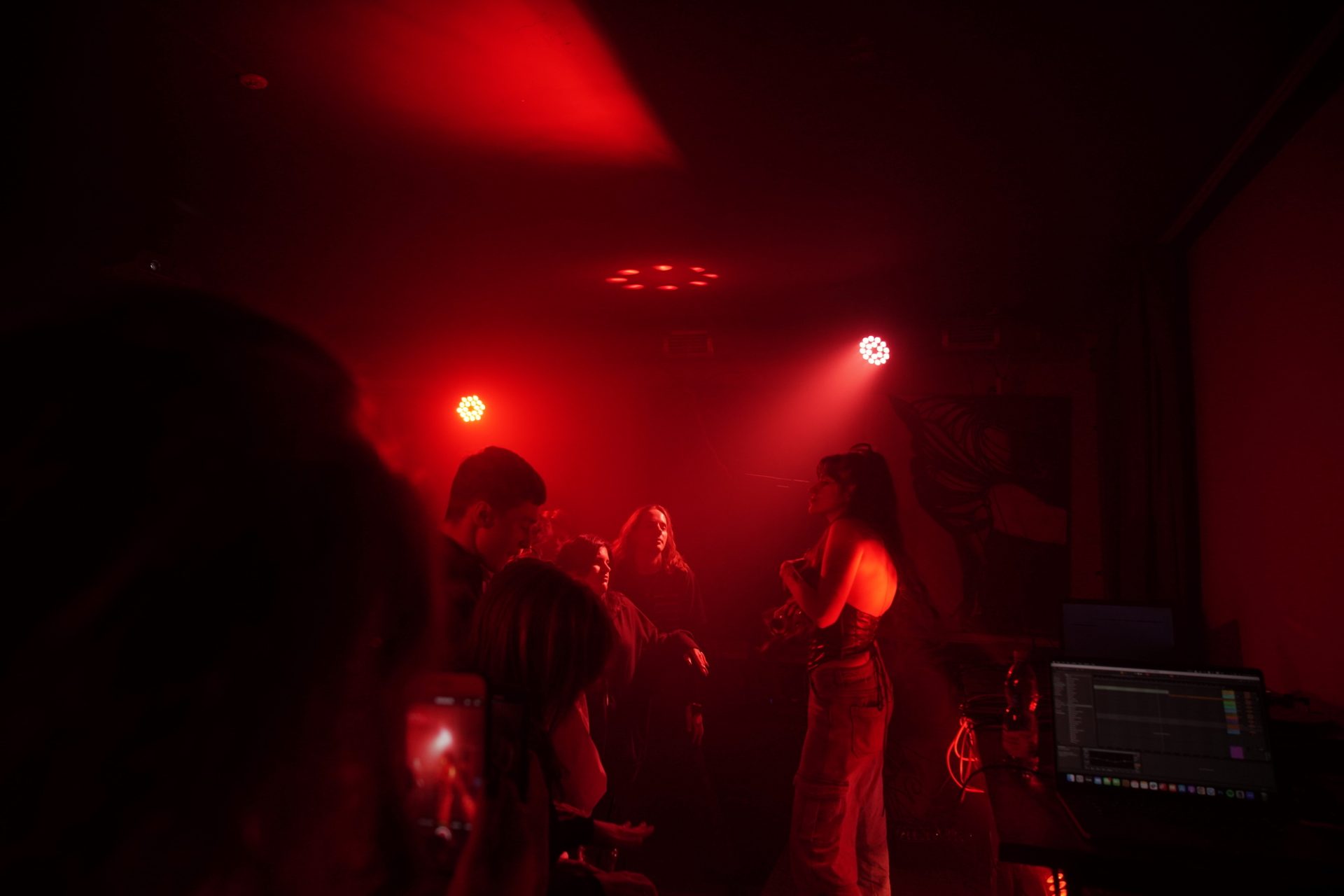
The festival ended with a spectacular performance of electronic music by singer Tucha, which attracted a young local audience. Her music and lyrics, interwoven with contemporary political messages, are marked by their profound expressiveness, and the concert served as a collective emotional release for those in attendance.
Image: Anna Yutchenko
This article is part of “Chytomo spotlights:Ukrainian culture on and after frontline” project. The project is funded by the Stabilisation Fund for Culture and Education of the German Federal Foreign Office and the Goethe-Institut. goethe.de.
This publication is sponsored by the Chytomo’s Patreon community
the more you read, the greater the possibilities
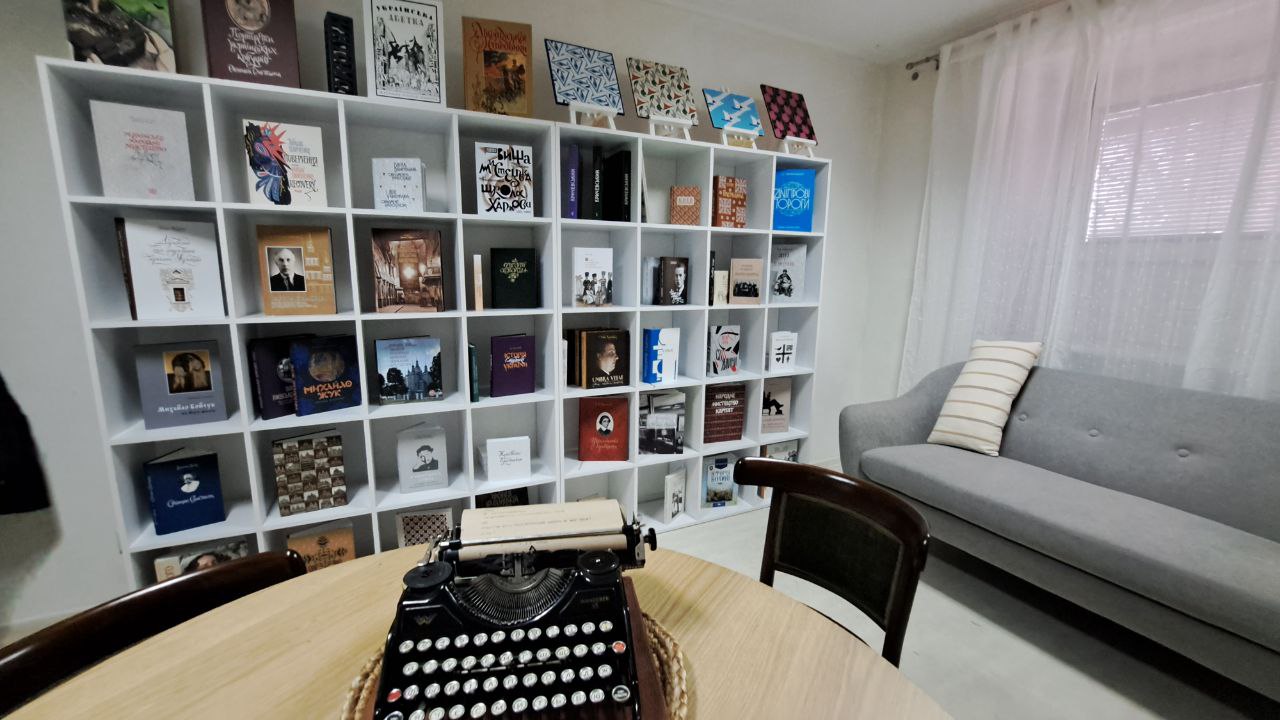
3806
Chytomo Spotlights
Amidst drone and missile attacks, Kharkiv publisher launches ‘Book Strongroom,’ a bomb shelter-bookstore, to preserve Ukrainian cultural heritage
15.12.2024 - Oleksandr Mymruk, Olesia Boiko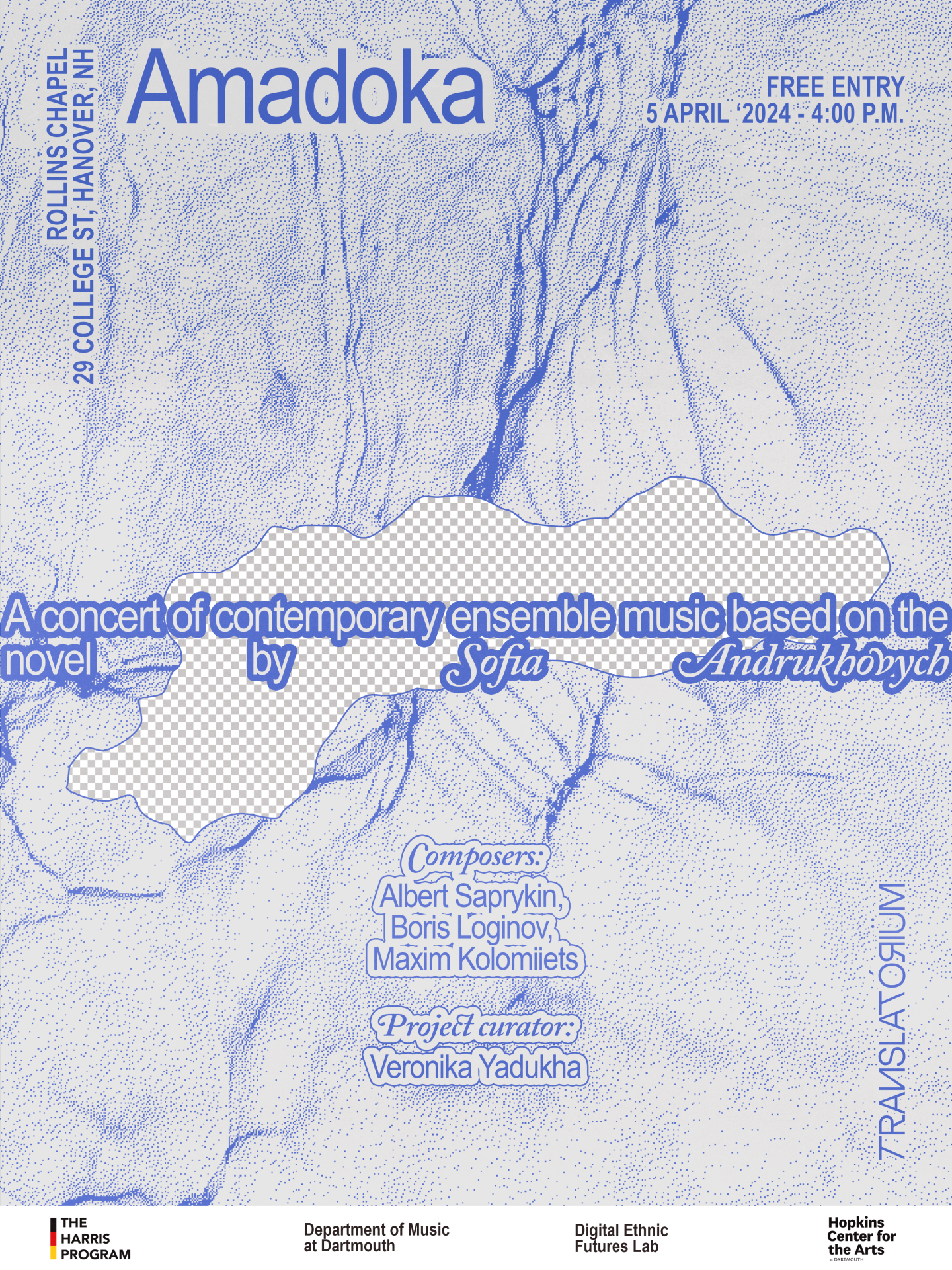
191
SOFIA ANDRUKHOVYCH
Award-winning Ukrainian novel by Sofia Andrukhovych to be performed as a concert at Dartmouth
02.04.2024 -

